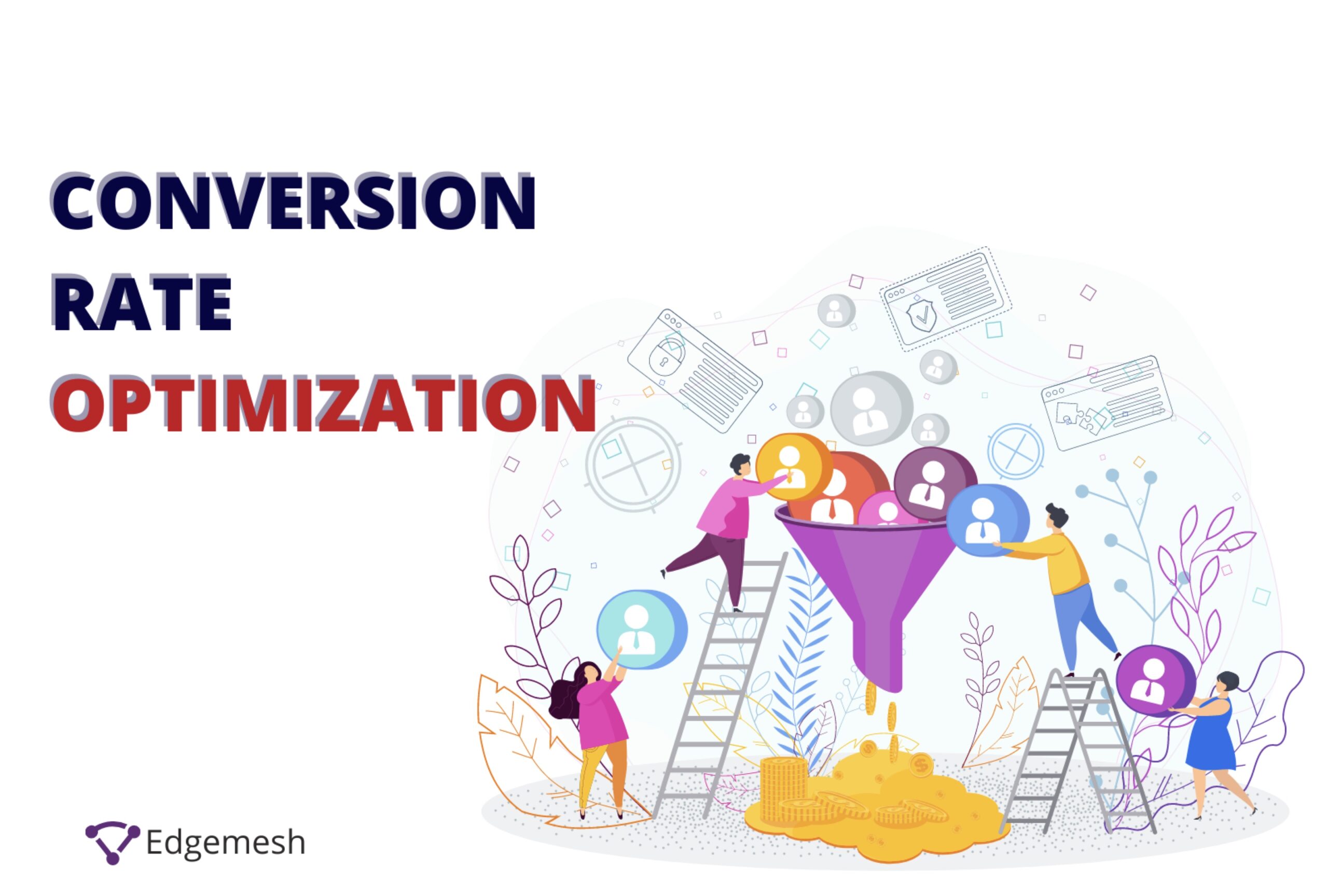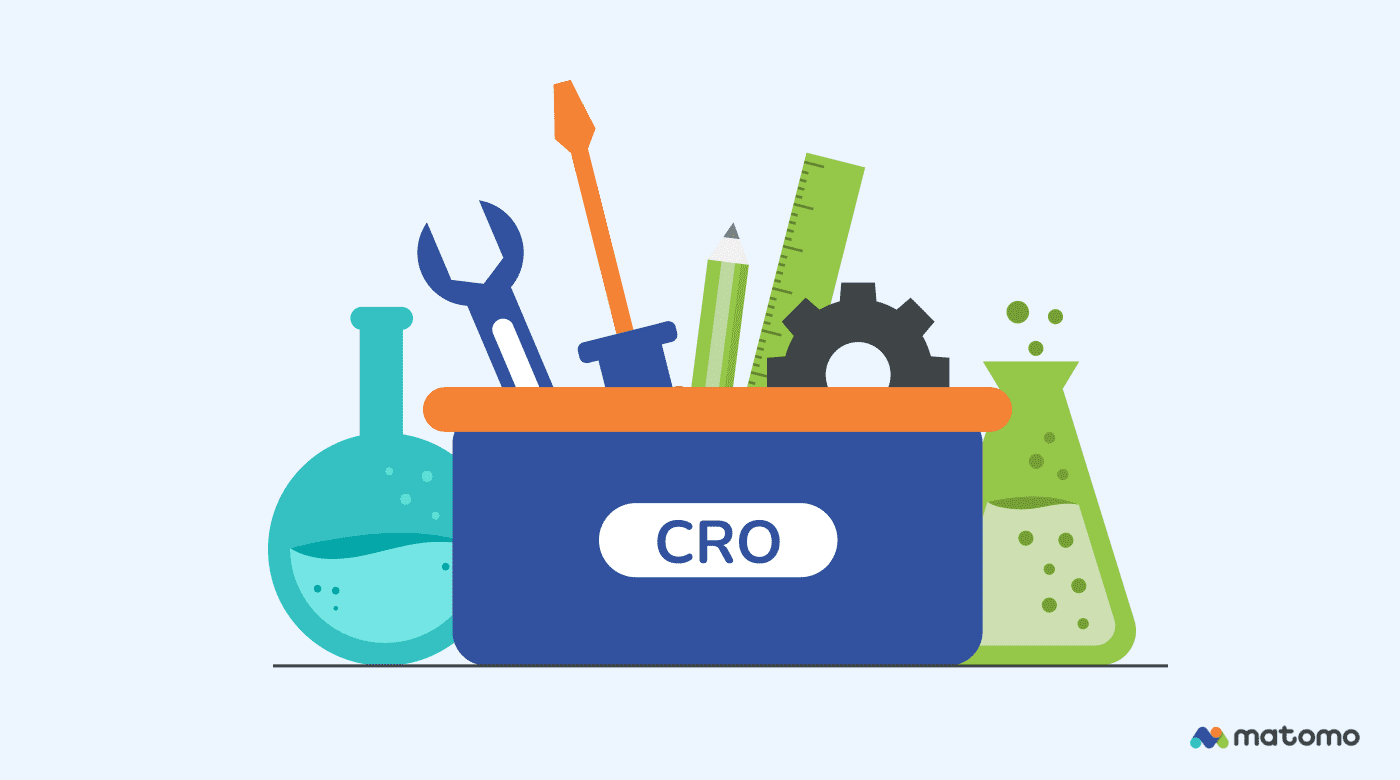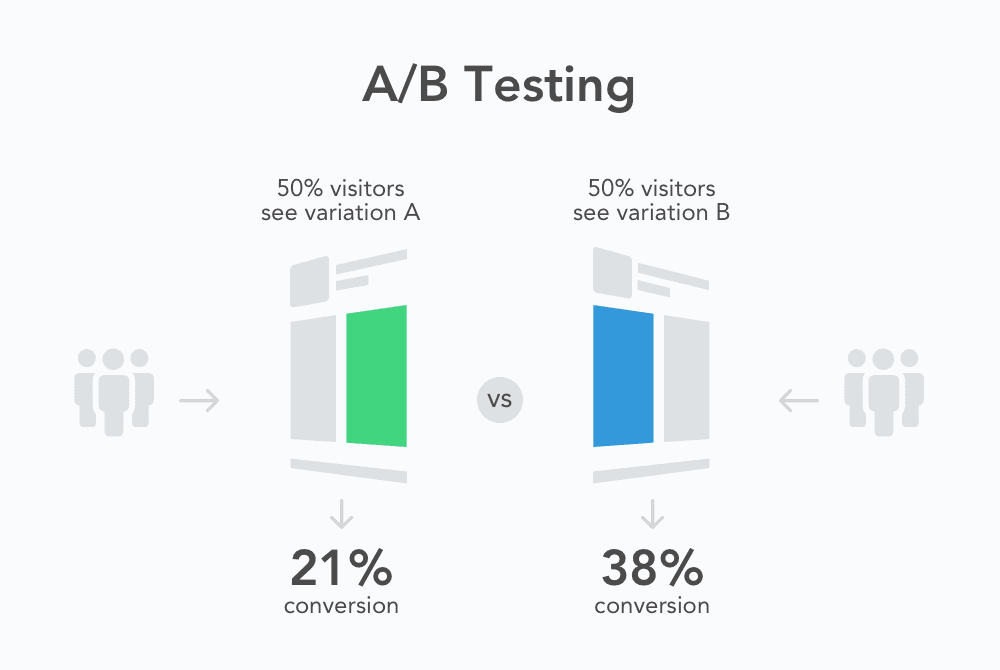In the bustling world of e-commerce, turning casual visitors into loyal customers can feel like decoding a complex puzzle. That’s where conversion rate optimization (CRO) services come into play, especially in a vibrant market like Melbourne. By harnessing data-driven strategies and creative insights, businesses can unlock higher profits and elevate their online presence. This ultimate guide delves into the essentials of CRO, equipping you with the tools to maximize visitor engagement and drive sales. Whether you’re a startup seeking growth or an established brand aiming for a competitive edge, understanding and implementing effective CRO techniques is vital. Join us as we explore the pathways to sustainable success and help your business thrive in the digital landscape!
Understanding Conversion Rate Optimization (CRO)
Conversion Rate Optimization (CRO) is the systematic process of increasing the percentage of website visitors who take a desired action—be it purchasing a product, signing up for a newsletter, or filling out a contact form. The essence of CRO lies in understanding user behavior, identifying areas of improvement, and implementing changes that enhance the overall user experience. This optimization journey is driven by both quantitative and qualitative insights, leveraging tools such as web analytics, user feedback, and A/B testing.
At its core, CRO is not just about boosting numbers; it’s about creating value for your visitors. By delivering a seamless and engaging user experience, businesses can foster trust, encourage repeat visits, and build long-term customer relationships. This holistic approach ensures that every element of your website, from design to content, works cohesively to guide visitors towards conversion. The ultimate goal is to reduce friction points and make the conversion process as intuitive and enjoyable as possible.
For businesses in Melbourne, CRO offers a strategic advantage in a highly competitive digital marketplace. As more companies invest in their online presence, standing out requires a meticulous focus on user-centric optimization. A well-executed CRO strategy can significantly amplify your marketing efforts, ensuring that your traffic translates into tangible results. Whether you’re a niche boutique or a large enterprise, understanding the principles of CRO is critical to achieving sustainable growth and maximizing your digital investments.
The Importance of CRO for Businesses in Melbourne
The digital landscape in Melbourne is vibrant and dynamic, with businesses across various sectors vying for the attention of tech-savvy consumers. In such a competitive market, merely attracting visitors to your website is not enough. What truly matters is your ability to convert these visitors into customers, and that’s where CRO becomes indispensable. By optimizing your conversion rates, you can make the most out of your existing traffic, thereby improving your return on investment (ROI).
Melbourne’s diverse consumer base presents both opportunities and challenges for businesses. To cater to this audience, you need a deep understanding of local preferences, behaviors, and trends. CRO allows you to tailor your website to meet these specific needs, enhancing user satisfaction and driving higher conversion rates. Moreover, a well-optimized website can improve your search engine rankings, making it easier for potential customers to find you amidst the digital noise.
In addition to driving sales, effective CRO practices can provide invaluable insights into your customers’ journey. By analyzing how users interact with your site, you can identify pain points and areas for improvement. This continuous feedback loop enables you to adapt and evolve, staying ahead of the curve in Melbourne’s fast-paced market. Ultimately, investing in CRO is not just about short-term gains; it’s about building a robust foundation for long-term success and growth.
Key Elements of Effective CRO Services
Effective CRO services encompass a range of elements that work together to enhance user experience and drive conversions. One of the foundational aspects is comprehensive data analysis. By leveraging tools like Google Analytics, heatmaps, and user recordings, businesses can gather insights into how visitors interact with their website. This data-driven approach helps identify bottlenecks in the user journey and pinpoint areas where improvements are needed.
Another critical element is user experience (UX) design. A well-designed website is intuitive, visually appealing, and easy to navigate. UX design focuses on creating a seamless journey for users, ensuring that they can easily find what they are looking for and complete their desired actions. This involves optimizing page layouts, enhancing visual hierarchy, improving load times, and ensuring that the site is mobile-friendly. A positive user experience is key to reducing bounce rates and increasing conversions.
Content optimization is also a vital component of CRO. High-quality, relevant content can engage visitors, build trust, and guide them towards conversion. This includes persuasive copywriting, compelling calls-to-action (CTAs), and informative product descriptions. Additionally, CRO services often involve testing and experimentation, such as A/B testing, to determine the most effective strategies. By continuously testing different elements and measuring their impact, businesses can make data-backed decisions and refine their approach to maximize results.
How to Choose the Right CRO Service Provider
Selecting the right CRO service provider is crucial to the success of your optimization efforts. The first step in this process is to evaluate their expertise and experience. Look for providers with a proven track record of delivering results in your industry. Case studies and client testimonials can provide valuable insights into their capabilities and the impact of their services. An experienced provider will have a deep understanding of CRO best practices and be able to tailor their approach to your specific needs.
Another important factor to consider is the range of services offered. Effective CRO requires a holistic approach that encompasses data analysis, UX design, content optimization, and testing. Ensure that the provider you choose offers a comprehensive suite of services that cover all these aspects. Additionally, consider their approach to collaboration and communication. A good CRO provider will work closely with your team, keeping you informed and involved throughout the process.
Lastly, consider the provider’s commitment to ongoing optimization. CRO is not a one-time project but a continuous process of improvement. Look for providers who offer ongoing support and are committed to regularly reviewing and refining their strategies based on performance data. This long-term partnership approach ensures that your optimization efforts are sustainable and continue to deliver results over time.

Common CRO Techniques and Strategies
There are several techniques and strategies commonly used in CRO to enhance user experience and drive conversions. One of the most effective strategies is A/B testing, where two versions of a webpage are compared to determine which one performs better. This method allows businesses to test different elements, such as headlines, images, CTAs, and layouts, to identify the most effective combinations. By continuously testing and iterating, businesses can optimize their website for maximum conversions.
Another common technique is user journey analysis. This involves mapping out the different paths that users take on your website and identifying any obstacles or friction points. By understanding the user journey, businesses can make targeted improvements to streamline the process and guide users towards conversion. This may involve simplifying navigation, reducing the number of steps required to complete a purchase, or improving the clarity of information.
Personalization is also a powerful CRO strategy. By tailoring the user experience to individual preferences and behaviors, businesses can create a more relevant and engaging experience. This can be achieved through techniques such as dynamic content, personalized recommendations, and targeted messaging. Personalization helps build a stronger connection with users, increasing the likelihood of conversion and fostering long-term loyalty.
Measuring Success: Key Performance Indicators for CRO
Measuring the success of your CRO efforts is crucial to understanding their impact and identifying areas for improvement. Key Performance Indicators (KPIs) are metrics that provide insights into the effectiveness of your optimization strategies. One of the primary KPIs for CRO is the conversion rate itself, which measures the percentage of visitors who complete a desired action. This metric provides a direct indication of the success of your optimization efforts.
Another important KPI is the bounce rate, which measures the percentage of visitors who leave your site after viewing only one page. A high bounce rate can indicate that users are not finding what they are looking for or that the user experience is not engaging. By analyzing the bounce rate, businesses can identify areas where improvements are needed to keep users on the site and guide them towards conversion.
Other valuable KPIs include average session duration, which measures the amount of time visitors spend on your site, and pages per session, which measures the number of pages viewed during a visit. These metrics provide insights into user engagement and the effectiveness of your content and navigation. Additionally, tracking the performance of specific elements, such as CTAs and landing pages, can help identify which strategies are most effective and where further optimization is needed.
Case Studies: Successful CRO Implementations in Melbourne
To illustrate the impact of effective CRO, let’s explore some successful implementations in Melbourne. One notable example is a local e-commerce store specializing in organic skincare products. By partnering with a CRO service provider, the business was able to identify key areas for improvement through comprehensive data analysis. This included optimizing product pages with high-quality images and detailed descriptions, enhancing the checkout process to reduce cart abandonment, and implementing personalized product recommendations. As a result, the store saw a significant increase in conversion rates and overall sales.
Another success story comes from a Melbourne-based financial services company. Facing high competition in the market, the company sought to improve its lead generation efforts through CRO. The service provider conducted extensive user journey analysis and identified several friction points in the lead capture process. By simplifying the contact forms, improving the clarity of information, and implementing targeted CTAs, the company was able to increase the number of qualified leads and improve its conversion rate.
A third example is a local restaurant chain that leveraged CRO to enhance its online ordering system. With the rise of online food delivery, the restaurant recognized the need to optimize its website for a seamless user experience. The CRO provider conducted A/B testing on various elements, such as menu layout, order customization options, and checkout process. By implementing the most effective changes, the restaurant was able to increase online orders and improve customer satisfaction.
The Role of A/B Testing in Conversion Rate Optimization
A/B testing plays a pivotal role in CRO by allowing businesses to make data-driven decisions and optimize their website based on real user behavior. This testing method involves creating two versions of a webpage (version A and version B) and randomly showing them to different segments of visitors. By comparing the performance of each version, businesses can determine which one is more effective in driving conversions.
The beauty of A/B testing lies in its ability to test a wide range of elements, from headlines and images to CTAs and page layouts. For example, a business might test two different headlines to see which one resonates more with visitors or experiment with different button colors to determine which one drives more clicks. These tests can be as simple or as complex as needed, depending on the specific goals and challenges of the business.
One of the key advantages of A/B testing is its iterative nature. Rather than making sweeping changes based on assumptions, businesses can implement small, incremental improvements and measure their impact. This continuous testing and optimization process ensures that the website is always evolving and improving, based on actual user data. By systematically testing and refining different elements, businesses can achieve significant gains in conversion rates and overall performance.

Future Trends in CRO Services
The field of CRO is constantly evolving, driven by advancements in technology and changes in consumer behavior. One of the emerging trends in CRO is the use of artificial intelligence (AI) and machine learning. These technologies enable businesses to analyze vast amounts of data and identify patterns and insights that would be difficult to uncover manually. AI-powered tools can automate the optimization process, making it more efficient and effective.
Another trend is the increasing focus on mobile optimization. With the growing use of smartphones and tablets, it’s essential for businesses to ensure that their websites are optimized for mobile devices. This includes creating responsive designs, improving load times, and simplifying navigation for smaller screens. Mobile optimization is not just about improving the user experience; it’s also a critical factor in search engine rankings, as search engines prioritize mobile-friendly websites.
Personalization is also set to play a bigger role in the future of CRO. As consumers expect more tailored experiences, businesses will need to leverage data and insights to deliver personalized content, recommendations, and offers. This can help create a more engaging and relevant user experience, driving higher conversion rates and fostering loyalty. Additionally, as privacy regulations evolve, businesses will need to find a balance between personalization and respecting user privacy.
Conclusion: Maximizing Profits through Effective CRO
In the competitive landscape of Melbourne’s digital market, conversion rate optimization is not just a luxury; it’s a necessity. By understanding the principles of CRO and implementing effective strategies, businesses can transform their websites into powerful conversion engines. From data analysis and UX design to content optimization and A/B testing, every element of CRO works together to enhance the user experience and drive conversions.
Choosing the right CRO service provider is crucial to achieving success. Look for providers with a proven track record, a comprehensive range of services, and a commitment to ongoing optimization. By partnering with the right provider, businesses can leverage expert insights and best practices to achieve their goals.
As we look to the future, advancements in technology and changes in consumer behavior will continue to shape the field of CRO. By staying ahead of these trends and continuously refining their strategies, businesses can maximize their profits and achieve sustainable growth. Ultimately, effective CRO is about creating value for your visitors and building long-term customer relationships. With the right approach, businesses in Melbourne can thrive in the digital landscape and unlock higher profits.
If you found this article helpful and need help with your website conversion, contact us for a FREE CRO Audit





